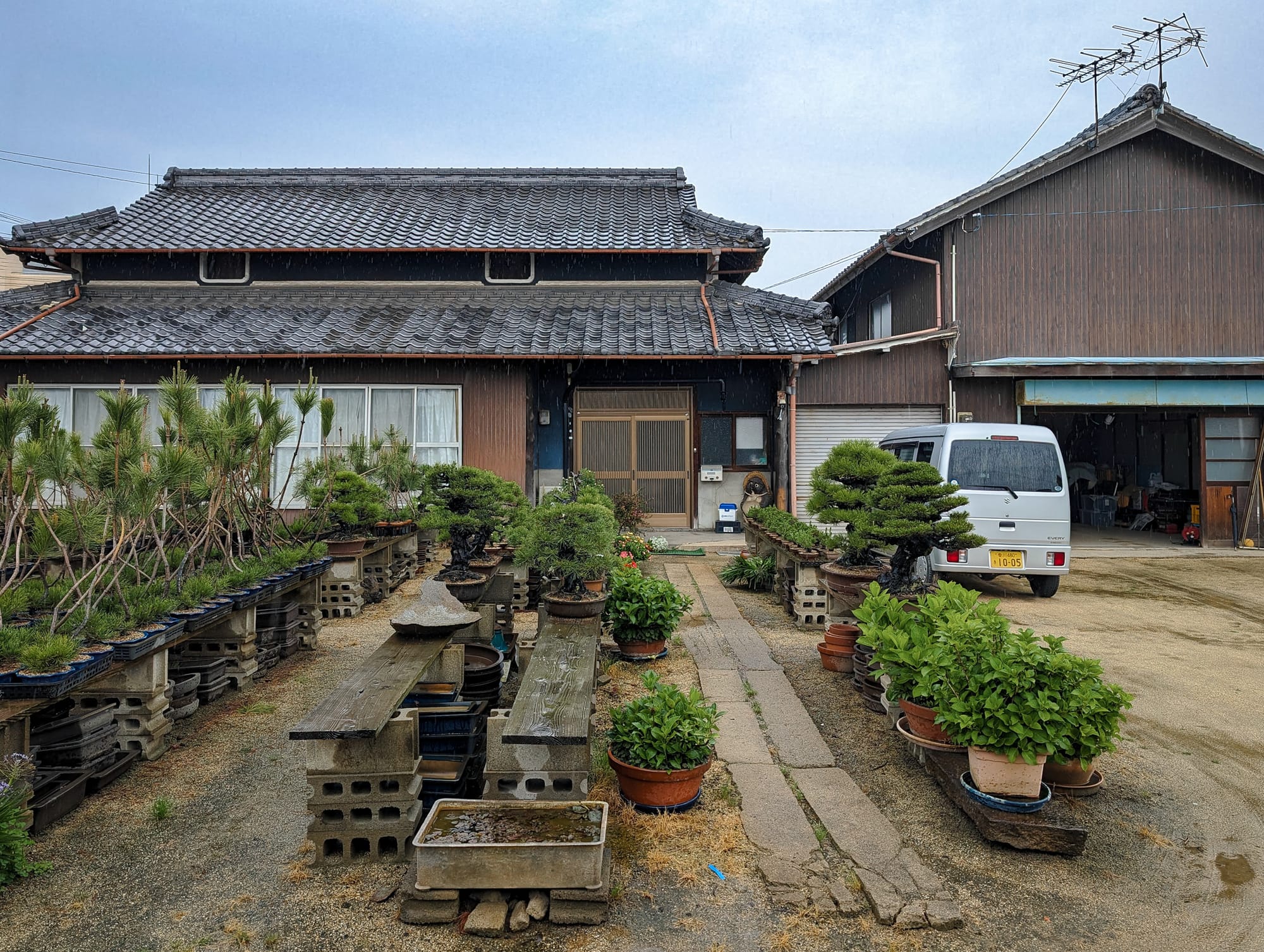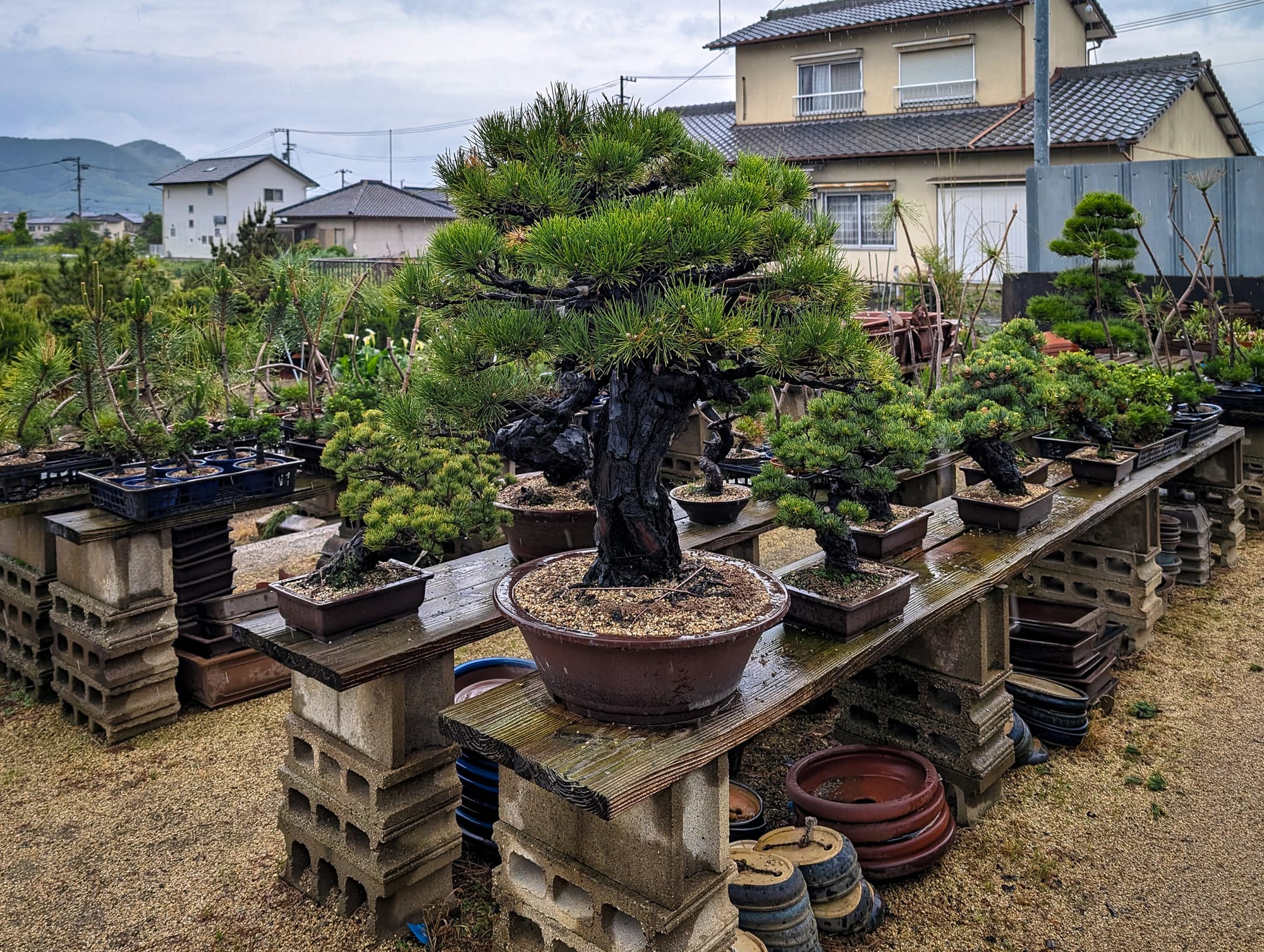
We approached during a downpour, uncertain whether our destination would be open because of Ōgon Shūkan—a period beginning at the end of April and lasting for about a week into early May, also known as Golden Week. Four national holidays fall within seven days, giving Japanese workers a rare chance to take extended leave from their jobs, socially secure in knowing that others are doing the same. Sure enough, when we arrived, we found nobody—only a Japanese house with an attached garage workshop, backing onto an expanse of urban farmland, silent except for the sound of rain and passing traffic. However, it didn't feel like a wasted journey, as the main attraction was at the front of the property, accessible to anyone from the street: a vast collection of thousands of bonsai trees, some priceless.
The miniature trees on display varied from those still growing from a more extended parent tree branch to majestic 100-year-old specimens, several feet tall with gnarled trunks, perfectly formed branches, and a sense of wisdom about them—just like a centuries-old full-sized tree can convey. As the rain fell, the trees remained silent and unperturbed, with droplets rolling off their leaves and sinking into the soil in their pots. We decided to dial the number on the Google listing. After a few rings, a voice answered, and a few minutes later, Kitadani Ryuichi emerged from the garage.

Anyone who has searched YouTube for bonsai-keeping tips might have come across Kitadani's channel, where he teaches the art of bonsai. Recognising the considerable interest in bonsai outside of Japan, he includes subtitles in multiple languages and localises his titles. I had found his videos a few years before during an initial attempt at keeping bonsai. However, I quickly realised that what I was trying to achieve with my garden-centre-bought indoor tree in my London apartment was mostly incompatible with his seasoned expertise.
This is a members-only post
Join now to finish reading and access the full Tokyothèque archive.
